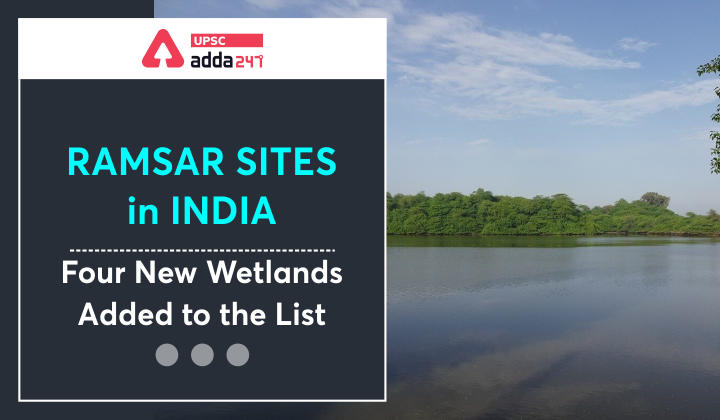Table of Contents
Context
- Recently, the environment ministry said that four more sites from India have been recognized under the 1971 Ramsar Convention on Wetlands bringing the total number of such designated areas in the country to 46.
- These four sites are-
- Thol Lake Wildlife Sanctuary and Wadhwana Wetland from Gujarat and
- Sultanpur National Park and Bhindawas Wildlife Sanctuary from Haryana
Key Points about Four New Sites
- Thol Lake Wildlife Sanctuary, Gujarat: It was initially built in 1912 as a tank by the Gaekwad regime to provide irrigation facilities to farmers. The state government declared it a Wildlife Sanctuary in 1988.
-
- Importance: It lies on the Central Asian Flyway and more than 320 bird species can be found here.
- Key species: supports more than 30 threatened waterbird species, such as-
- Critically endangered: White-rumped Vulture and Sociable Lapwing
- Vulnerable: Sarus Crane, Common Pochard, and Lesser White-fronted Goose.
- Wadhvana Wetland, Gujarat: It was initially created as an irrigation dam in 1910.
-
- Importance: provides wintering ground to migratory waterbirds, including over 80 species that migrate on the Central Asian Flyway.
- Key species: It includes the following-
- Endangered: Pallas’s fish-Eagle,
- Vulnerable: Common Pochard, and
- Near-threatened: Dalmatian Pelican, Grey-headed Fish-eagle, and Ferruginous Duck.
- Bhindawas Wildlife Sanctuary, Haryana: It is a human-made freshwater wetland, the largest in Haryana.
-
- Importance: used by more than 250 bird species throughout the year as a resting and roosting site.
- Key Species: supports more than ten globally threatened species including-
- Endangered: Egyptian Vulture, Steppe Eagle, Pallas’s Fish Eagle, and Black-bellied Tern.
- Sultanpur National Park: Sultanpur Jheel inside the park was given sanctuary status in 1971 and the status of the park was upgraded to the National Park under the Wildlife (Protection) Act, 1972 in July 1991.
-
- Importance: supports more than 220 species of resident, winter migratory, and local migratory waterbirds at critical stages of their life cycles.
- Key Species: supports many globally threatened species like-
- Critically endangered: sociable lapwing, and
- Endangered: Egyptian Vulture, Saker Falcon, Pallas’s Fish Eagle, and Black-bellied Tern.



 TSPSC Group 1 Question Paper 2024, Downl...
TSPSC Group 1 Question Paper 2024, Downl...
 TSPSC Group 1 Answer key 2024 Out, Downl...
TSPSC Group 1 Answer key 2024 Out, Downl...
 UPSC Prelims 2024 Question Paper, Downlo...
UPSC Prelims 2024 Question Paper, Downlo...
